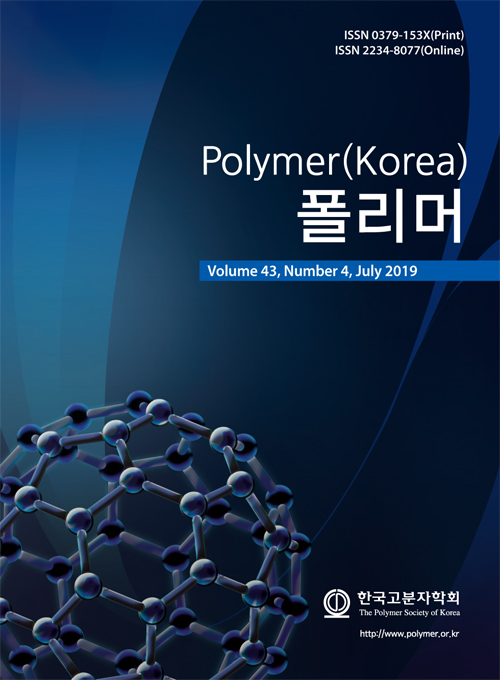- Fabrication of Microneedles Array Combining Biodegradable Hyaluronic Acid and Herbal Medicine Lonicera Flos
Department of Emergency Medicine, Kangbuk Samsung Hospital, Sungkyunkwan University School of Medicine, Seoul 03181, Korea
*Department of Pharmaceutical Science and Engineering, Seowon University, Chungju 28674, Korea- 생분해성 히알루론산과 한약소재 금은화를 융합한 마이크로 니들 어레이의 제조
성균관대학교 의과대학 강북삼성병원 응급의학과, *서원대학교 BIT융합대학 제약식품공학부
Skin has been exposed to the physical and chemical damages caused by external contact. The occurrence of scarring can cause not only cosmetic problems but also health problems. In general, hyaluronic acid is known to construct human exfoliated cells to protect skin from skin damage and the regeneration of exfoliation through external stress factors, and is known to be effective in healing wounds as well as in moisture content. In this study, we fabricated hyaluronic acid microneedles (HaMNs) array containing Lonicera flos (Lfs) for transdermal delivery system (TDDS). And then, the shapes of HaMNs were imaged by scanning electron microscopy. Skin permeability and cell viability were measured to confirm mechanical strength and cytotoxicity, respectively. Also, the stability of the Lfs component was confirmed through the Folin–Ciocalteu method. HaMNs containing lonicera confirmed to be well fabricated for TDDS and did not show significant cytotoxicity. These results suggest that HaMNs represent a promising technology to deliver active compounds into the skin.
피부는 외부와 접촉하고 있어 물리적 화학적 영향으로 인한 크고 작은 손상에 노출되고 있으며, 흉터의 발생은 미용상 문제뿐만 아니라 건강상의 문제를 유발시킬 수 있다. 이 연구에서는 외부적 스트레스 요인으로 인한 피부의 손상 및 각질의 생성으로부터 피부를 보호하고 피부 트러블을 개선하기 위한 경피 제형을 제조하기 위해 인체 각질세포를 구성하고 수분의 함유뿐만 아니라 상처의 회복에도 효과가 있는 것으로 알려진 생분해성 히알루론산(hyaluronic acid, Ha)과 염증 개선효과가 있는 것으로 알려진 한의약 소재 금은화(Lonicera flos, Lfs) 성분을 결합한 히알루론산 마이크로 니들(HaMNs) 어레이를 제작하였다. 전자주사현미경(SEM)을 통해 HaMNs 어레이의 형상을 확인하였고, HaMNs의 기계적 특성을 확인하기 위해 피부 투과성을 측정하였다. 또한 Lfs를 융합한 HaMNs의 세포독성을 MTT-assay법을 이용하여 확인하였고, HaMNs 어레이 제조후 Lfs 성분의 안정성을 폴리페놀 함량측정법(Folin–Ciocalteu method)을 통해 확인하였다. Ha과 Lfs 성분이 융합된 HaMNs 어레이가 잘 제작되었으며, 세포독성도 확인되지 않았다. 이러한 결과들을 통해 HaMNs는 피부로 유효성분을 전달할 수 있는 유용한 제형 기술로 판단된다.
Keywords: microneedles, lonicera, herbal medicine, hyaluronic acid
- Polymer(Korea) 폴리머
- Frequency : Bimonthly(odd)
ISSN 0379-153X(Print)
ISSN 2234-8077(Online)
Abbr. Polym. Korea - 2023 Impact Factor : 0.4
- Indexed in SCIE
 This Article
This Article
-
2019; 43(4): 540-546
Published online Jul 25, 2019
- 10.7317/pk.2019.43.4.540
- Received on Feb 11, 2019
- Revised on Apr 8, 2019
- Accepted on Apr 14, 2019
 Correspondence to
Correspondence to
- Seung-Jun Lee, Hun-Yong Ha
-
Department of Pharmaceutical Science and Engineering, Seowon University, Chungju 28674, Korea
- E-mail: finedaddy@seowon.ac.kr, hahunyong@seowon.ac.kr










 Copyright(c) The Polymer Society of Korea. All right reserved.
Copyright(c) The Polymer Society of Korea. All right reserved.